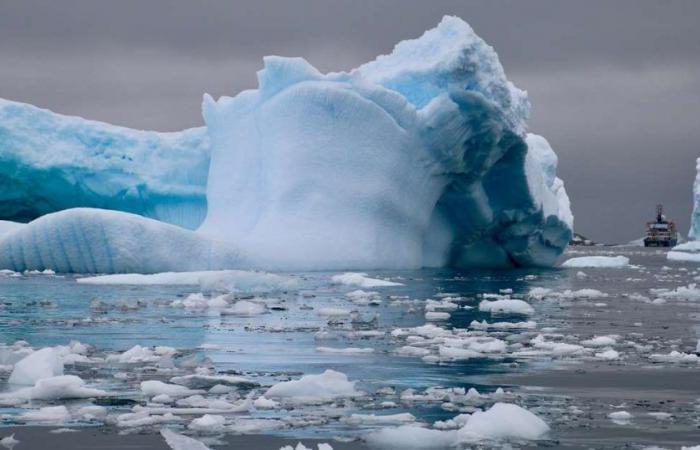The melting of ice sheets in Antarctica has reached a new level of concern for scientists. A recent study, carried out by the British Antarctic Survey (BAS) and published in the journal Nature Geoscience, has identified a novel and alarming way in which large ice sheets can melt, which could significantly accelerate sea level rise and affect coastal areas around the world.
The research highlights how relatively warm seawater can infiltrate and lick the underside of land-based ice, accelerating its movement into the ocean. This critical process, not yet included in current models predicting sea level rise, could provide a more accurate picture of future changes due to global warming.
A new turning point
Alex Bradley, senior ice dynamics researcher at BAS, explains that they have identified the possibility of a new tipping point in the melting of the Antarctic ice sheet. This means that our projections of sea level rise could be significant underestimates. The region of interest is the foothold zone, where land ice meets the sea and eventually moves into the surrounding ocean, contributing to sea level rise in coastal regions such as Greenland and Antarctica.
The study models how seawater can seep between land and the ice sheet, affecting localized melting and lubricating the ice bed, influencing the speed at which it could slide toward the sea. This process is accelerated by the warming of sea water.
Sensitivity of ice sheets
Ice sheets are very sensitive to melting in their support zones. In the study they found that support zone melting shows a ‘tipping point’ behavior, where a small change in ocean temperature can cause a very large increase in support zone melting, leading to a significant change in ice flow.
This feedback effect is intensified because the melting of hot water in the support area creates cavities that allow the entry of more hot water, causing more melting and the formation of even larger cavitiesA small increase in water temperature can have a large impact on the amount of ice melted, a phenomenon currently not considered in the models used by the Intergovernmental Panel on Climate Change (IPCC).
The lack of incorporation of this new physics into current models could explain why the Antarctic and Greenland ice sheets appear to be shrinking faster than expected. Including these new findings could result in more reliable estimates of sea level rise, suggesting that current projections could be significant underestimates.
The study warns that while the implications will not be felt immediately, sea level rise accumulated over decades and centuries could have devastating consequences for global coastal communities. The Antarctic ice sheet is already losing an average of 150 billion metric tons of ice each year and, in its entirety, contains enough water to raise global sea level by approximately 58 meters.







